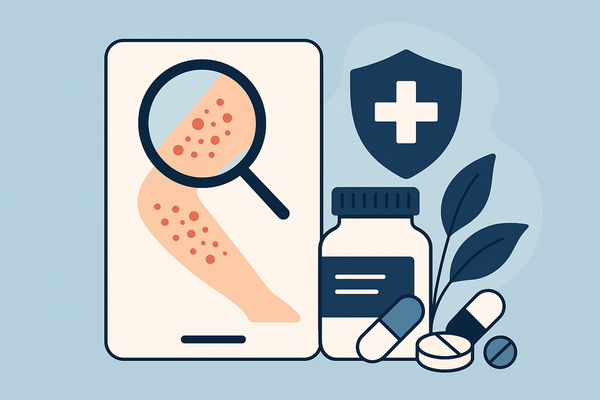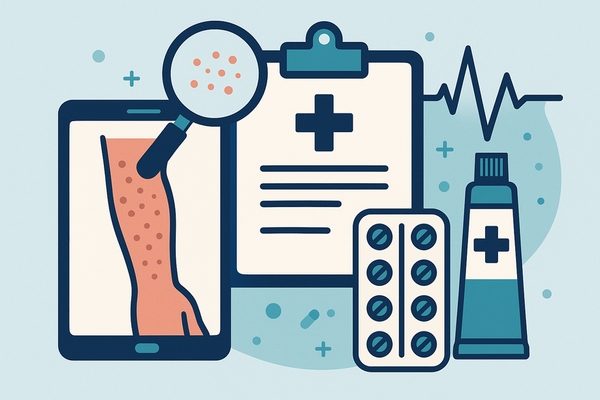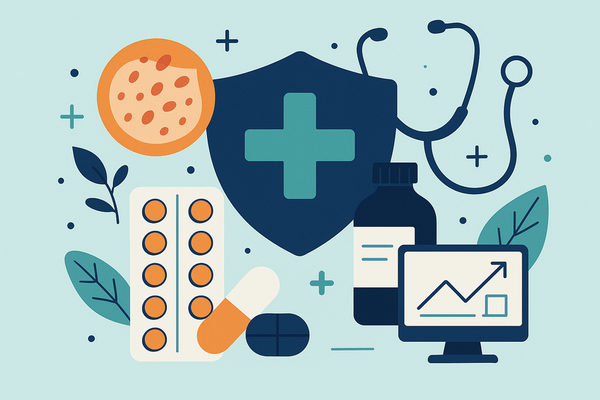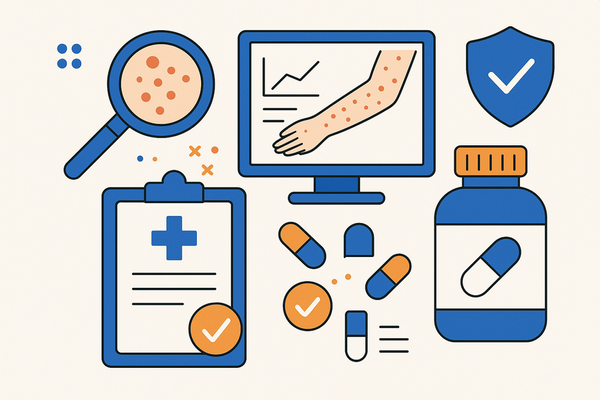Your Guide to Medication Rash Treatment: Identify, Manage, and Prevent
Learn how to identify, manage, and prevent medication rash treatment effectively. Discover symptoms, treatments, and when to seek emergency care.
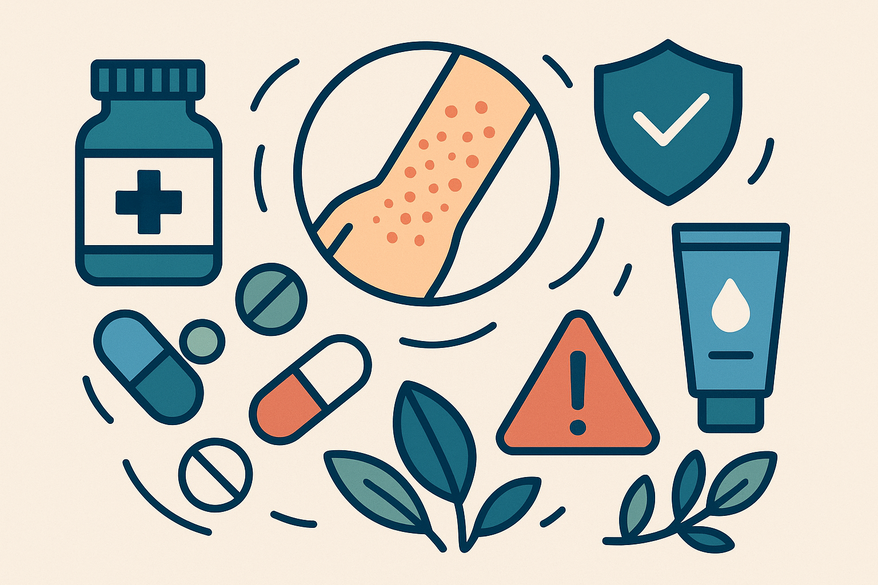
Estimated reading time: 8 minutes
Key Takeaways
- Prompt recognition of medication-induced rashes can prevent complications and speed recovery.
- Reactions range from mild irritation to life-threatening syndromes like SJS/TEN.
- At-home care (cool compresses, moisturizers, antihistamines) complements prescription treatments (corticosteroids, IV therapies).
- Clear communication of allergy history and use of medical alert tools reduces recurrence risk.
- Emergency signs—such as breathing difficulty or widespread blistering—require immediate medical attention.
Table of Contents
- 1. Understanding Medication-Induced Rashes
- 2. Recognizing the Symptoms of Medication Rashes
- 3. Diagnosis and Medical Consultation
- 4. Treatment Options for Medication Rashes
- 5. Prevention and Long-Term Management
- 6. When to Seek Emergency Care
- Conclusion and Additional Resources
- FAQ
1. Understanding Medication-Induced Rashes
Definition: Medication rashes are adverse skin reactions caused by certain drugs, either via immune-mediated or non-immune processes. They arise when a medication’s chemical structure or its breakdown products trigger skin changes. See identifying drug-induced rash symptoms for more detail.
Common Triggers:
- Antibiotics (penicillins, sulfa drugs) – classic culprits in antibiotic-related rashes.
- Anticonvulsants (phenytoin, carbamazepine) – often cause widespread eruptions.
- Nonsteroidal anti-inflammatory drugs (NSAIDs) – can provoke hives or maculopapular rashes.
Severity Spectrum:
- Mild: Maculopapular eruptions, red spots, slight itching.
- Moderate: Raised itchy bumps (urticaria), localized blistering.
- Severe: Stevens-Johnson syndrome (SJS), toxic epidermal necrolysis (TEN), DRESS syndrome.
Differentiating from Other Allergies: Unlike food or environmental allergies, medication rashes are directly linked to a drug’s chemical or immunological impact and may involve organ systems, altering blood counts or liver enzymes.
2. Recognizing the Symptoms of Medication Rashes
Key Symptoms:
- Red or purple maculopapular eruptions on face or trunk.
- Raised, itchy hives (urticaria) that come and go.
- Blisters, peeling, or raw skin in severe cases.
- Localized swelling, burning, or discomfort.
Warning/Red-Flag Signs:
- Difficulty breathing or throat tightness.
- Extensive skin detachment or widespread blistering.
- Sores in mouth, eyes, or genitals; fainting spells.
Home Monitoring Guidance:
- Track changes over 24–48 hours if mild and without fever.
- Keep a photograph log to share with your provider.
- Contact your healthcare provider if rash spreads, worsens, or you develop fever, joint pain, or dizziness.
3. Diagnosis and Medical Consultation
Never stop a prescribed drug without consulting a provider. An accurate diagnosis rules out other conditions like viral exanthem or eczema.
Diagnostic Steps:
- Medical History Review: Document recent medications, doses, and rash onset timing.
- Physical Exam: Inspect rash pattern, size, and location.
- Blood Tests: Evaluate organ involvement (e.g., liver enzymes) or eosinophilia.
- Skin Biopsy: Rule out other dermatoses if unclear.
- Patch Testing: Identify specific drug allergens when multiple suspects exist.
Real-World Example: A 35-year-old on carbamazepine developed a diffuse rash after two weeks. A biopsy confirmed a drug eruption, and patch testing pinpointed carbamazepine, avoiding future cross-reactive anticonvulsants.
4. Treatment Options for Medication Rashes
First-Line Action: Discontinue the suspected drug under medical supervision. Never self-adjust critical medications.
At-Home Remedies:
- Cool compresses: 10–15 minutes, 3–4 times daily.
- Calamine lotion or fragrance-free moisturizer.
- Oral antihistamines:
- Cetirizine 10 mg once daily.
- Diphenhydramine 25 mg every 6 hours.
Prescription Treatments:
- Topical corticosteroids: 1% hydrocortisone cream twice daily.
- Oral corticosteroid taper: Prednisone 0.5–1 mg/kg/day over 1–2 weeks.
- High-dose antihistamines under supervision for persistent urticaria.
- Intravenous therapies for SJS/TEN: IVIG, cyclosporine.
Lifestyle Adjustments: Avoid irritants (fragrances, harsh soaps), wear loose cotton clothing, keep skin hydrated, and use broad-spectrum sunscreen outdoors.
5. Prevention and Long-Term Management
Preventing Recurrence:
- Review side effects in patient leaflets or trusted drug databases before new meds.
- Communicate allergy history to every provider.
- Consider a medical alert bracelet for life-threatening drug allergies.
Ongoing Management:
- Perform medication reconciliation at each visit.
- Schedule skin checks every 3–6 months if on long-term therapy.
- Educate on early signs and encourage prompt reporting.
Real-World Tip: Pharmacists can flag re-prescriptions of drugs that caused past reactions, reducing cross-reactivity risk.
6. When to Seek Emergency Care
Absolute Emergency Signs:
- Rapid swelling of face, lips, or tongue.
- Severe breathing or swallowing difficulty.
- Widespread blistering or skin peeling.
- Anaphylaxis signs: hypotension, confusion, tachycardia.
What to Do: Call 911 or proceed to the nearest emergency department immediately. Early intervention can be lifesaving in SJS/TEN or severe anaphylaxis.
Conclusion and Additional Resources
- Recognize early signs of medication rashes and seek timely evaluation.
- Never stop prescribed drugs without medical advice.
- Manage mild cases at home; moderate to severe reactions require medical therapies.
- Prevent future rashes by sharing allergy history and using medical alert tools.
- Seek emergency care for breathing issues, rapid swelling, or widespread skin loss.
For at-home monitoring and painless early detection, consider using the Rash Detector. With its AI-driven analysis, you can upload three images of your rash and receive instant, evidence-based insights.
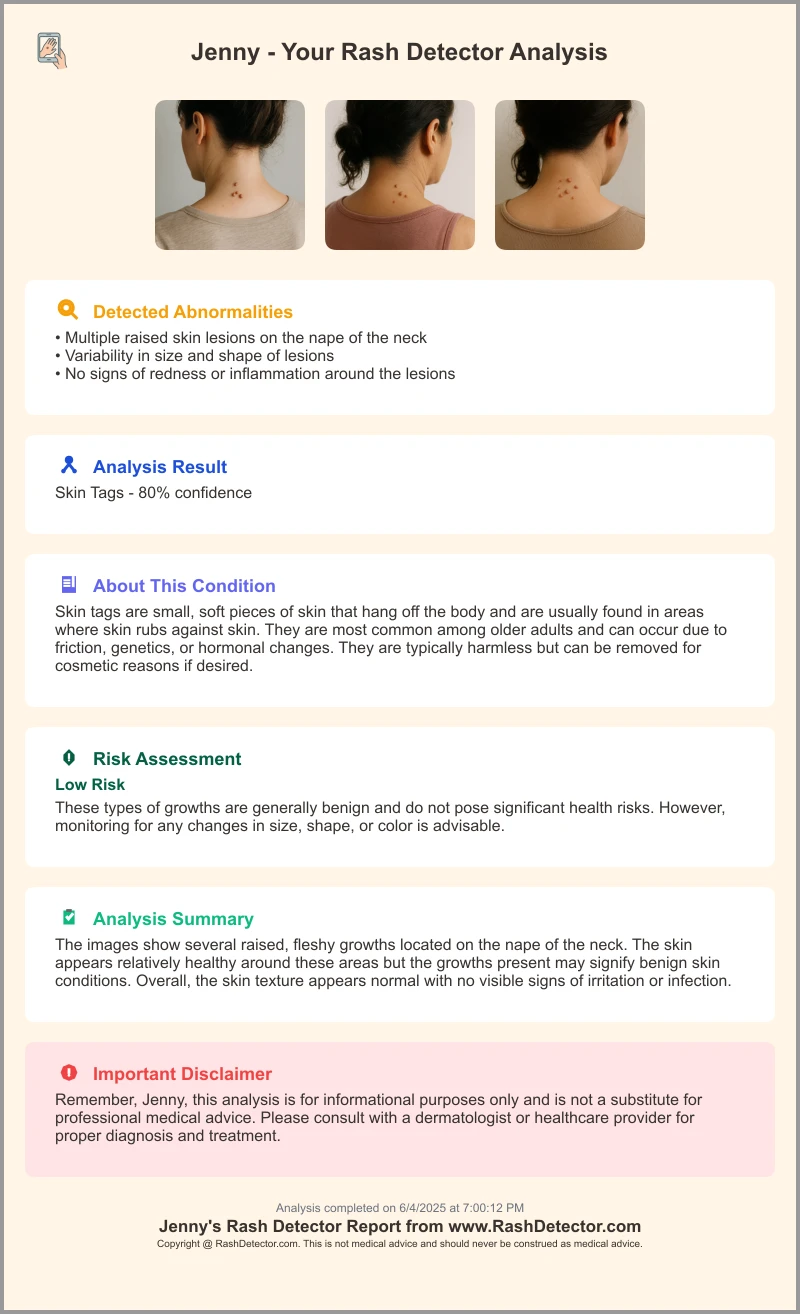
For more in-depth guidance on managing drug allergy rashes, see managing drug allergy rashes.
Further reading:
FAQ
Q1: How long does a medication rash last after stopping the drug?Mild rashes often improve within days; full resolution may take 1–2 weeks depending on severity and treatments like steroids or antihistamines.
Q2: Are over-the-counter creams safe for medication-induced rashes?Low-strength hydrocortisone creams and oral antihistamines can help mild cases. For extensive or persistent rashes, consult your provider before use.
Q3: Can medication rashes recur with related drugs?Yes. Cross-reactivity is possible, especially among similar drug classes (e.g., sulfa antibiotics). Always inform providers about past drug reactions to choose safer alternatives.


